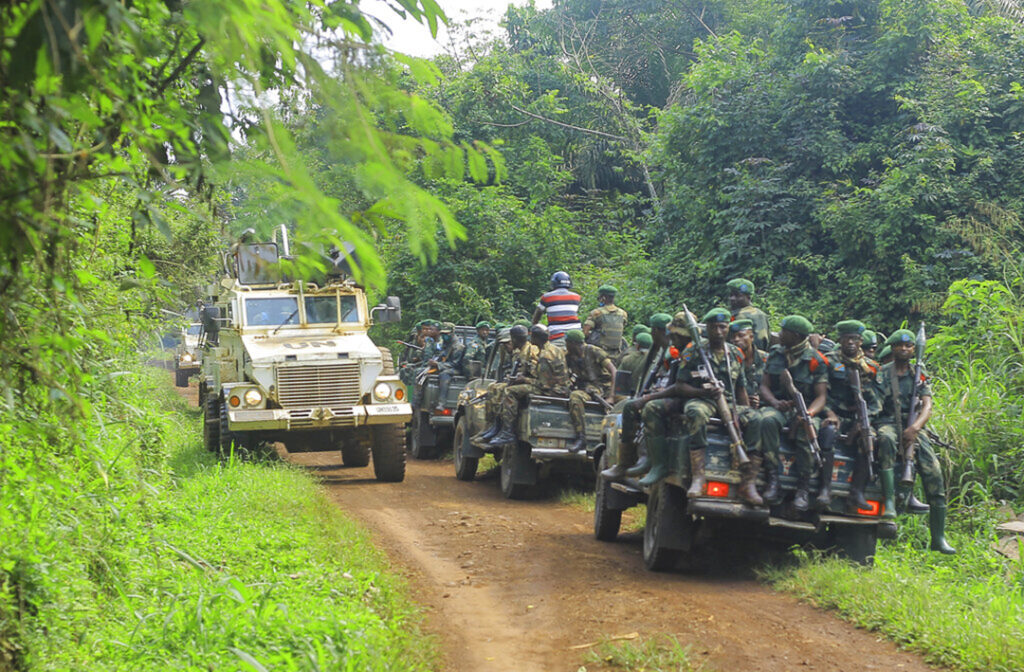ADF STAFF
The East African Community is moving ahead with plans to create a regional military force to deploy to the troubled eastern region of the Democratic Republic of the Congo (DRC).
The DRC officially joined the East African Community, or EAC, as the regional bloc’s seventh partner state on March 29. Other member countries are Burundi, Kenya, Rwanda, South Sudan, Tanzania and Uganda.
Less than a month later, the EAC voted to establish a regional military force to address armed groups that have plagued eastern DRC for decades. Kenya and Uganda already have troops fighting rebels in eastern DRC. Rwanda wanted to send troops in 2021, but DRC politicians rejected the proposal. In the new EAC agreement, Rwandan Soldiers will be part of the regional force.
In a June 6 meeting in Goma, regional chiefs of defense forces discussed the structure of the force and the importance of the mission.
“Security and stability in Eastern DRC is vital for regional prosperity as it will provide a conducive environment upon which all other aspects of regional integration shall thrive,” Gen. Robert Kibochi, chief of the Kenya Defence Forces (KDF), said. “We must, therefore, collectively as a region support efforts to address security challenges and restore peace and stability in the Eastern DRC to allow our people exploit the full potential offered by regional integration.”
The militant rebel group March 23 Movement, known as M23, recently launched its biggest offensive in a decade in eastern DRC. Tens of thousands of civilians have fled the resurgence of violence. The group started eastern DRC’s last big rebellion in 2012 before its defeat months later.
M23’s recent attacks have targeted DRC forces and members of MONUSCO, the United Nations’ peacekeeping mission in the DRC.
The DRC needs the EAC’s help. While its estimated annual military budget of $570 million is comparable to some other countries in the region, DRC Soldiers are badly underequipped. The DRC’s arms consist mostly of a mix of secondhand Russian and Soviet-era weapons, acquired between 1970 and 2000. In recent years, the now-embattled Ukraine has been the DRC’s largest supplier of arms.
On June 7, the heads of the defense forces of EAC member states agreed on the “urgent” need to send a regional force to help end violence in the eastern DRC.
Authorities acknowledge that a military push will not be enough to bring peace to the region. The DRC will have to continue to negotiate with rebels, according to a U.N. official.
Officials say that it is in the best interests of the region to help restore stability to the beleaguered country. The DRC borders nine countries — the most on the continent. In a United Nations Security Council meeting in late May, a representative from Kenya said that the fate of the DRC would, in many ways, determine the fate of the entire region.
Despite joining the regional intergovernmental group, the DRC maintains a testy relationship with neighboring Rwanda. Relations between the DRC and Rwanda have been strained since Hutus accused of slaughtering Tutsis during the 1994 Rwanda genocide arrived en masse in eastern DRC. As recently as June 5, DRC President Felix Tshisekedi said he was certain that Rwanda is backing the M23 rebels.
Rwandan officials have categorically rejected the DRC’s allegations, saying that the rebels are not Rwandan but instead are Congolese nationals whose grievances should be resolved by the DRC.

